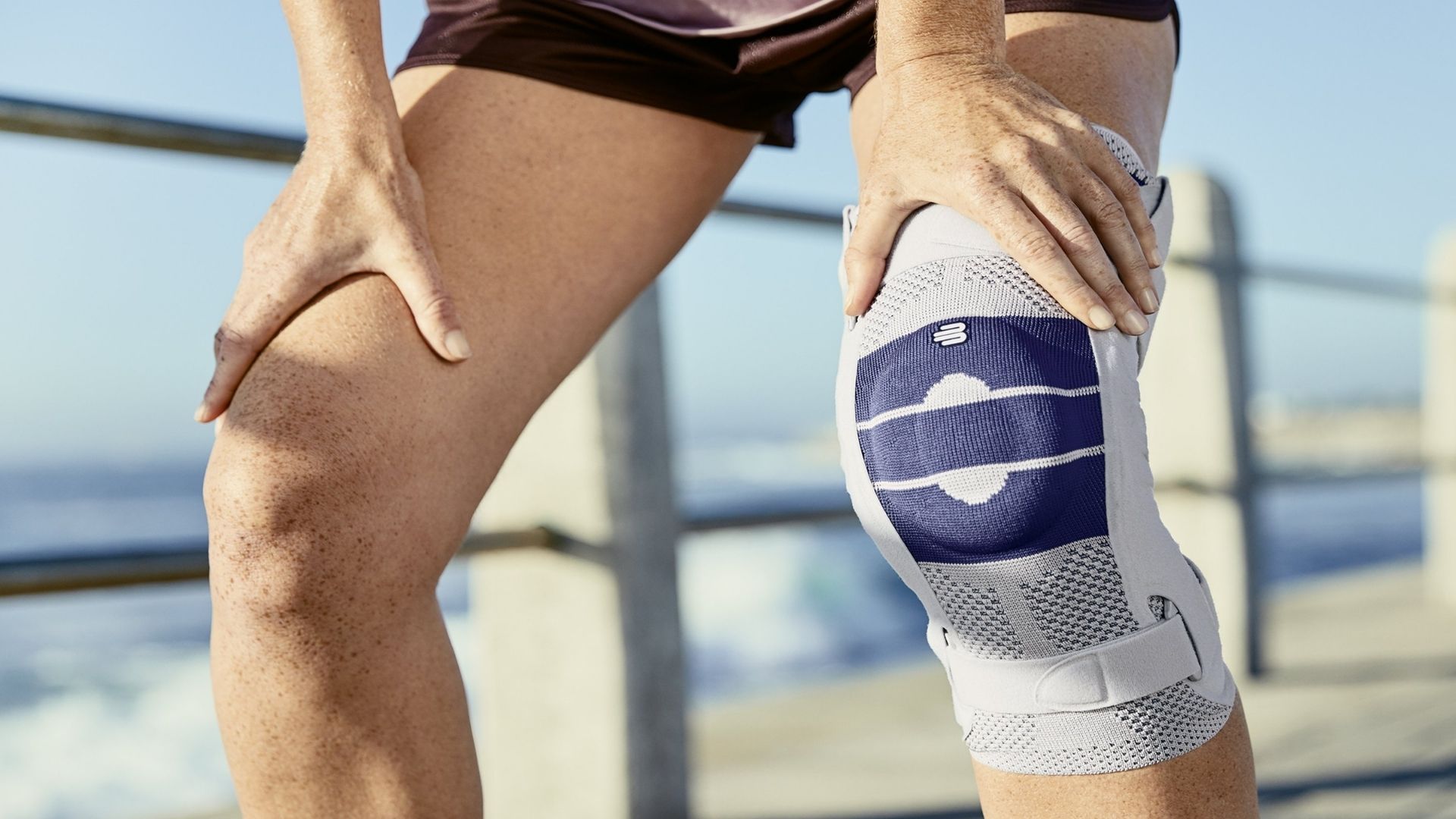As a physiotherapist, I am often asked if a support brace or sleeve is warranted after an injury and if it can make a difference in the person’s recovery. Support braces are sometimes recommended by healthcare professionals. Because they can be purchased at a pharmacy, people sometimes purchase them when they are experiencing pain in a specific area of the body without understanding their purpose or whether it will actually benefit them.
To help you better understand what support braces do, how they work and when and how to use them appropriately, I will provide a physiotherapists perspective and opinion on some of the most common bracing questions I hear.
1. What is a Support Brace?
A support brace is a device that a person wears to assist with their daily function, reduce pain, or improve efficiency in a task that they want to get back to. Support braces can be used around the knee, ankle, elbow, and wrist, as a short list of examples. These braces may help the person by providing guidance to movement throughout the joint, improving stability, decreasing weight bearing through painful areas of the joint, or limit muscular/tendon contraction at that specific area. This type of assistance can improve a person’s functional capabilities.
2. When Should You Wear a Support Brace?
Depending on the type of injury and severity, support braces can play an important factor in the physiotherapy management and recovery. At the end of the day, your physiotherapist really needs to understand your clinical picture before prescribing a supportive brace.
3. Do Support Braces Work?
This is a controversial question for certain, highly studied areas of the body when it comes to bracing. In general, many people report feeling more support with braces therefore, allowing them to move more easily and do their home exercises more often which leads to better clinical outcomes. Some studies also report people feeling more confident in using their supported limb while using a brace, compared to something less supportive like a sleeve.[i]
Support bracing has been shown to improve self-reported pain associated with movement of the knee joint in people living with patello-femoral pain syndrome, in some studies[ii]. This same study also concludes that the use of a knee brace can facilitate exercise therapy that people need to effectively engage in to optimize recovery
4. Does it matter if I get a custom brace or an off-the-shelf support brace?
Some studies demonstrate that custom bracing that was designed to improve functional outcomes post-ACL reconstruction surgery, were not significantly different than a common knee sleeve.[iii]
This does not necessarily mean custom bracing does not improve other functional outcomes like confidence in using the knee, or in following through with sports and activities.
5. Will I become dependent on the support brace if I get one/do my muscles risk being weakened for the rest of my life?
Although it may seem intuitive that a braced joint will become reliable on a brace, it’s mainly the clinical application that determines how a brace will impact a person’s life after injury. With careful guidance, weaning off of a brace would be ideal, however, they can also play a supportive role if the person is going to be performing a physical activity that requires more resilience than their everyday activities.
Studies have shown that prolonged use of ankle braces does not inhibit the function of specific ankle muscles, responsible for preventing ankle inversion sprains (classic “rolling of the ankle” when playing sports).[iv]
6. Does it matter which brand of support brace I use?
Branding is a powerful tool- some brands cater directly to specific joints of the body, while others promote comfort with modular components. The type of brace that works for you is the type that you will:
- Wear as prescribed,
- Don/Doff properly
- Adhere to its use.
At Propel Physiotherapy, we understand the importance of comfort, fit, adherence, and consistency to the treatment program. We often prescribe Bauerfeind or Ossur Braces to our clients because they tend to provide the best fit and customization capabilities. A brace should be easy to don/doff and offer the support with minimal barriers. It is our clinical opinion that these companies offer that ability to the widest scope of clients, at this point in time.
Our experienced and trained physiotherapists will provide a comprehensive assessment to determine if a support brace is appropriate for your needs. This assessment can include an assessment of the joint movement, the laxity of ligaments, strength and range of motion of the muscles around the joint, and gait assessment.
Book in for an assessment to help determine if a brace is the right choice for you to help you get back to pain free activities.
References
[i] Birmingham et al., (2008). “A Randomized Controlled Trial Comparing the Effectiveness of Functional Knee Brace and Neoprene Sleeve Use after Anterior Cruciate Ligament Reconstruction.” The American Journal of Sports Medicine. Vol. 36, Issue 4.
[ii] Liliam et al., (2020). “Two Weeks of Wearing a Knee Brace Compared With Minimal Intervention on Kinesiophobia at 2 and 6 Weeks in People With Patellofemoral Pain: A Randomized Controlled Trial.” Archives of Physical Medicine. Volume 101, Issue 4, Pg. 613-623.
[iii] Birmingham et al., (2008). “A Randomized Controlled Trial Comparing the Effectiveness of Functional Knee Brace and Neoprene Sleeve Use after Anterior Cruciate Ligament Reconstruction.” The American Journal of Sports Medicine. Vol. 36, Issue 4.
[iv] Cordova, ML & Ingersll, CD (2003). Peroneus longus stretch reflex amplitude increases after ankle brace application. British Journal of Sports Medicine Volume 37, Issue 3, pg. :258-262.
Written by












